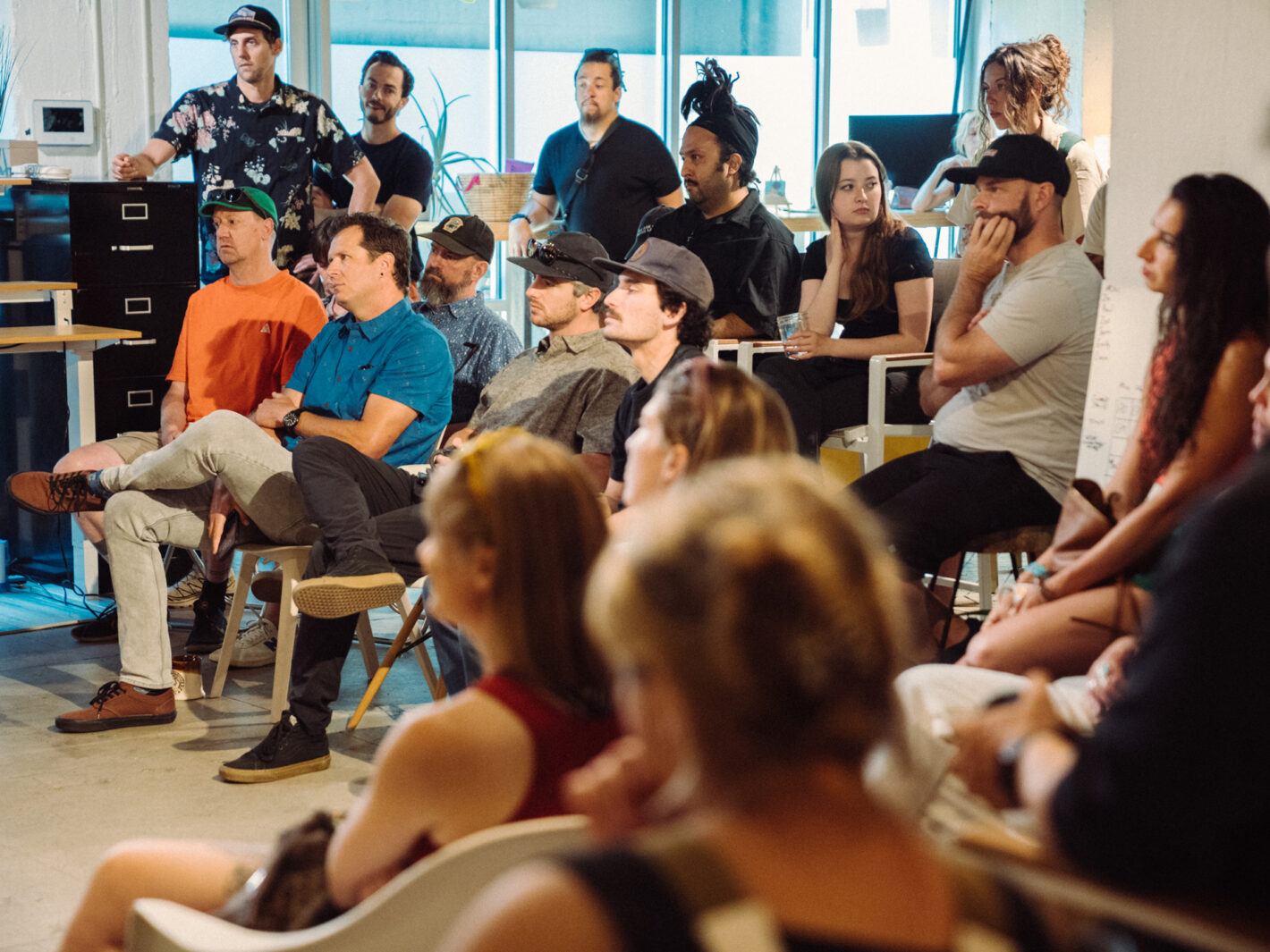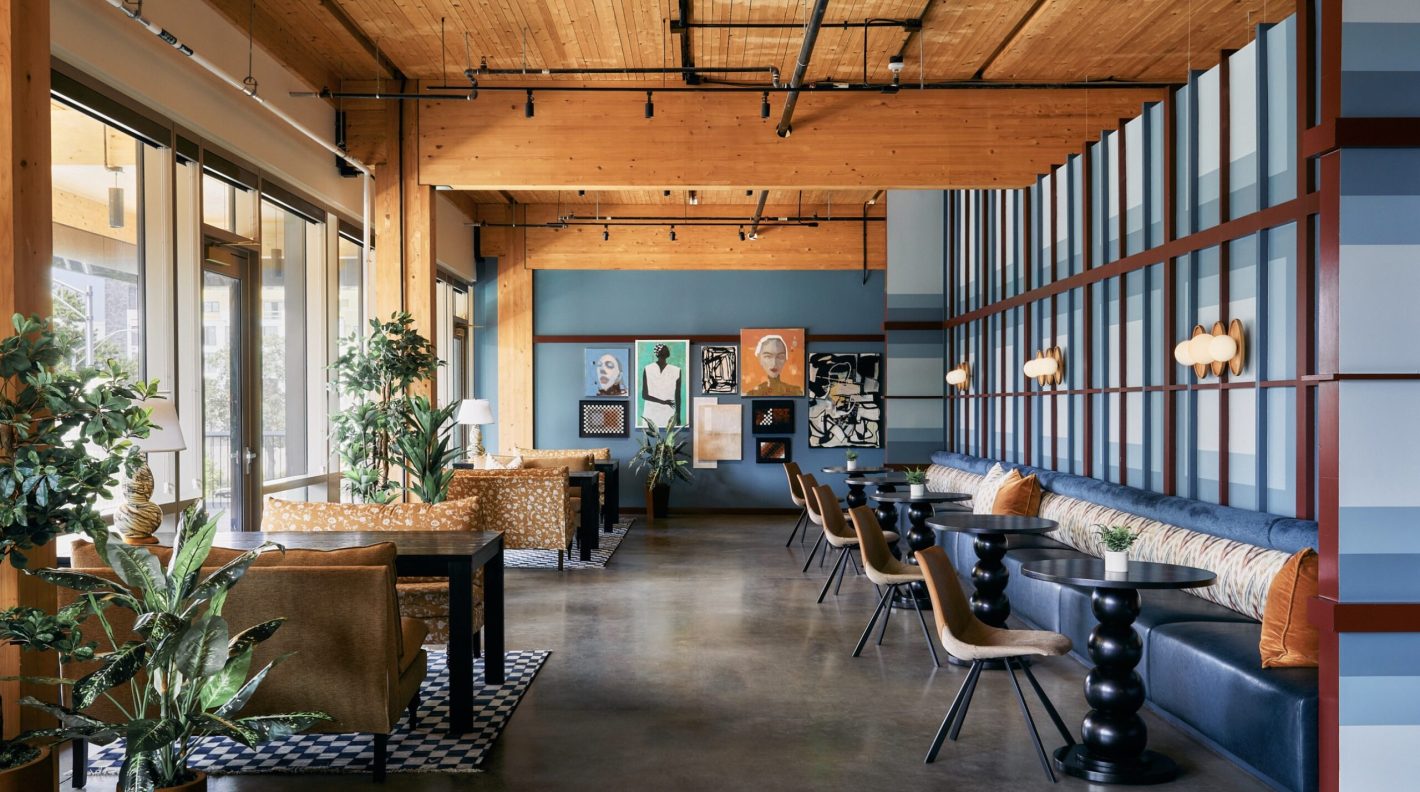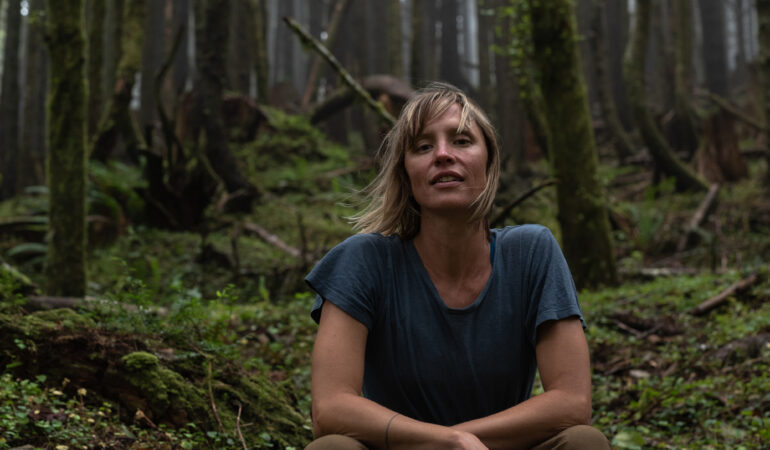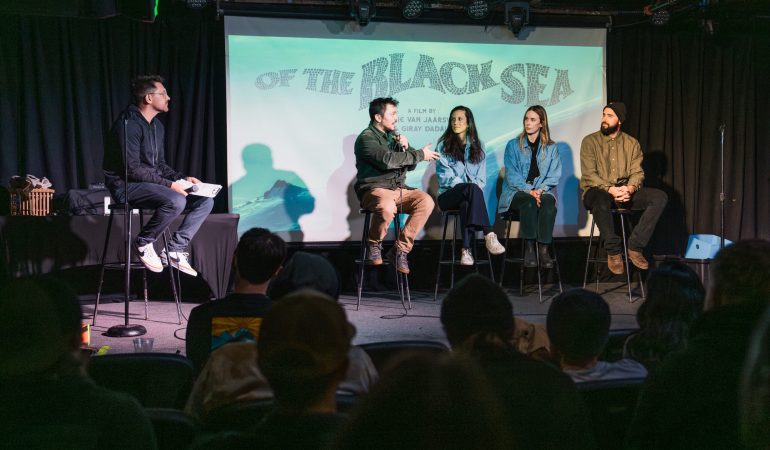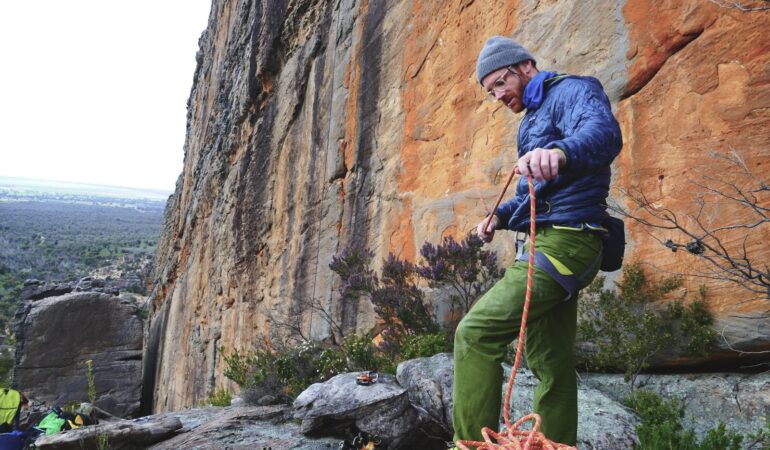The offices are called The Confluence. It’s a co-working space started in 2021 by Brown, fellow Sweetgrass co-owner Zac Ramras, and Zeppelin Zeerip, the founder of Field Work Creative, another production company.
The trio were motivated by many of the same challenges van Jaarsveld faced with remote life. “Zac and I had been working from the top floor of my house and we had a tough time finding a good work/life balance,” says Brown. “We wanted to create a divide between doing dishes and creative work, and we figured there were other people in our community who felt the same way.”
“We envisioned The Confluence as a hotspot for creatives,” says Ramras. “A place where people can come and work but also share ideas and, potentially, get jobs from one another.”
In February 2021, the three men signed a lease on a 4,000-square-foot space in downtown Salt Lake City, then went to work renovating, spending about $20,000 to add a storage room for camera equipment, a photo studio, phone-call booths, desks and chairs, and a conference table. When they opened that fall, they offered space for $300 per month. “We’re not making money off this,” says Zeerip. “We’re seeking to cultivate a community of creatives, and we need to make it affordable for them.”
This year, led by Zeerip, The Confluence began offering bi-monthly workshops called “Coffee and Creatives,” for which Zeerip brings in industry experts to discuss topics ranging from how to develop a pitch deck to how to manage mental health as an independent contractor.
For his part, van Jaarsveld signed a lease at The Confluence shortly after his first visit. He says his productivity has increased tenfold. The co-working space has also led to job opportunities. “One person who works right next to me is huge in the snowboarding industry and makes product videos for Skullcandy,” he says. “I got a bunch of work making product videos from her, and I’ve gotten work from Zeppelin making hunting videos.”
The Confluence is far from the only shared workspace catering to creatives—which makes sense. As creative work is increasingly executed remotely with independent contractors, there is a need for community and connection in what has been described as a shattered business ecosystem. And it’s not hype to say that freelancing is booming in the creative game. According to a 2021 survey published by Statista, a data collection platform, of the roughly 76 million people who do freelance work in the United States, 77 percent work in art and design.
In the past decade, spaces like NeueHouse, which operates in Los Angeles and New York, have sprung up, offering unique amenities for freelance creatives, such as podcast studios and a screening room. But it’s the connections that are likely the biggest draw. Creative work, especially for the commissioned stuff, is inherently collaborative. We need to build teams, vet ideas, and network.
“I think people come to these places for the community,” says Valentina Lara, the marketing manager for Ampersand Studios, a co-working space for creatives that has locations in Miami and Nashville. “You can work from anywhere these days, but people choose to work from spaces like this because they’re surrounded by like-minded individuals and, by nature, people who work in these spaces can help each other in their business endeavors. You might be walking through the hallways and discover that the person you’re chatting with can do social media for you.”


